Back at the beginning of this trip, I stayed with ADV member Floridabob in Florida, before heading up north. He insisted that if I was in the vicinity of Birmingham, Alabama, that I absolutely HAD to check out the Skip Barber Motorsport Museum, located at the Skip Barber raceway.
Holy mother of god . . .
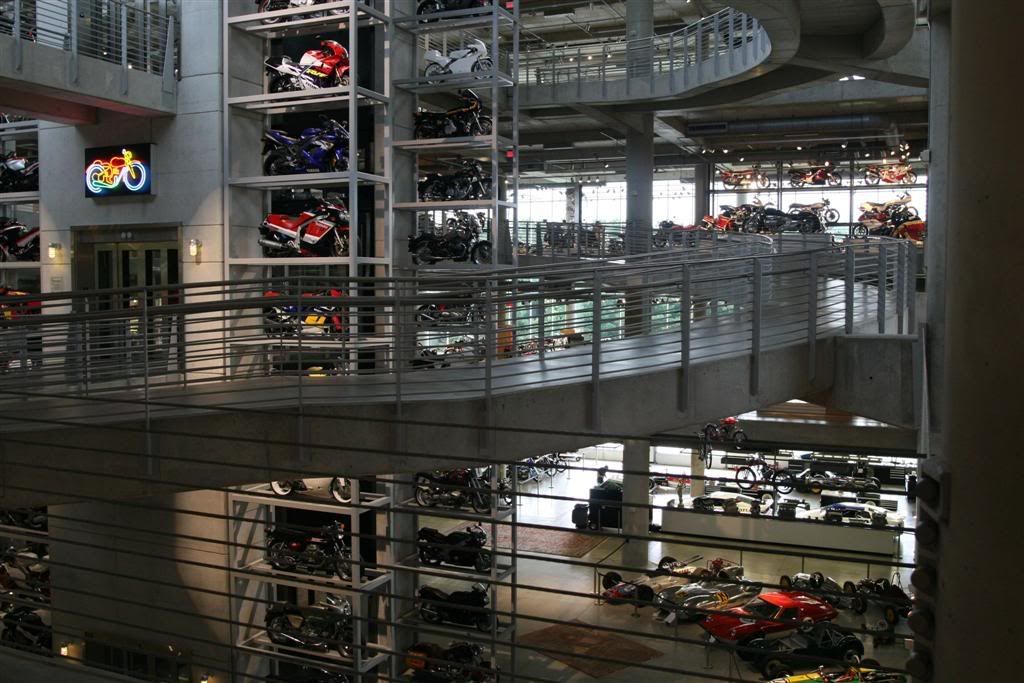
Motorcycles. More motorcycles then I'd ever seen. And not just your run-of-the-mill production street bikes like you'd be surrounded by at a bike rally, this was a huge collection of everything even remotely related to motorcycles, old bikes, REALLY old bikes, weird bikes, wonderful bikes, and the just plain bizarre. They even had some of those strange machines with four wheels that don't fall over.
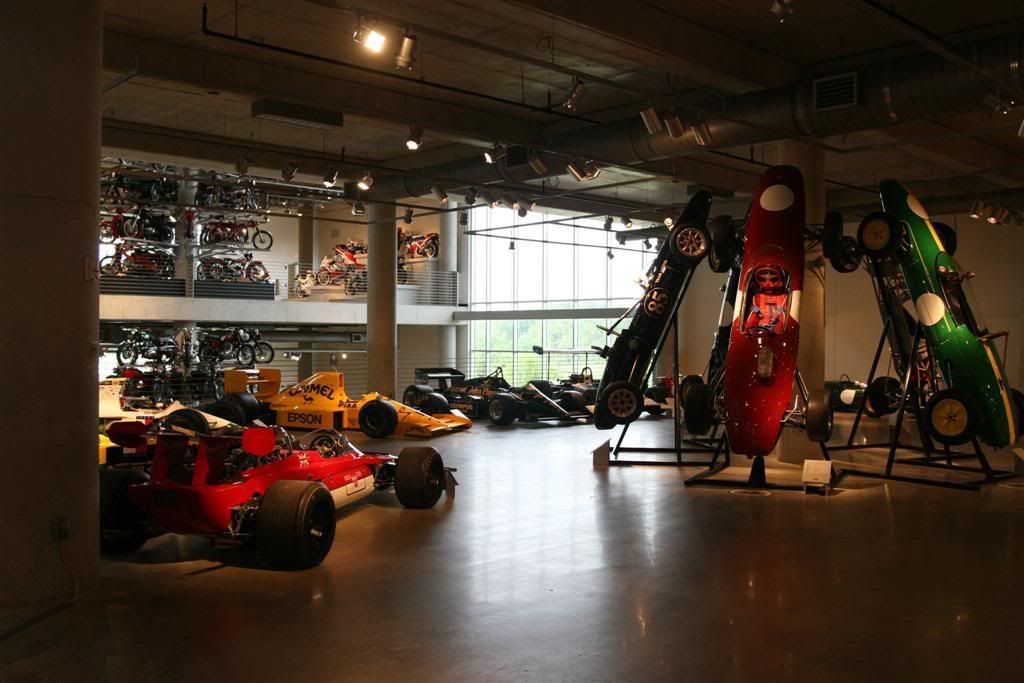
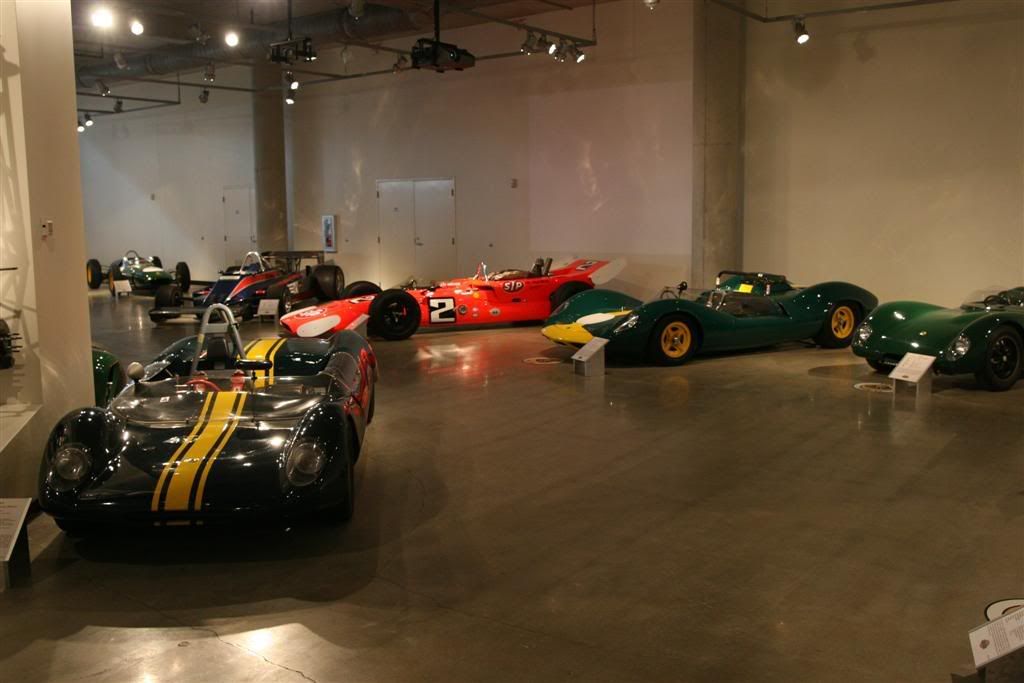
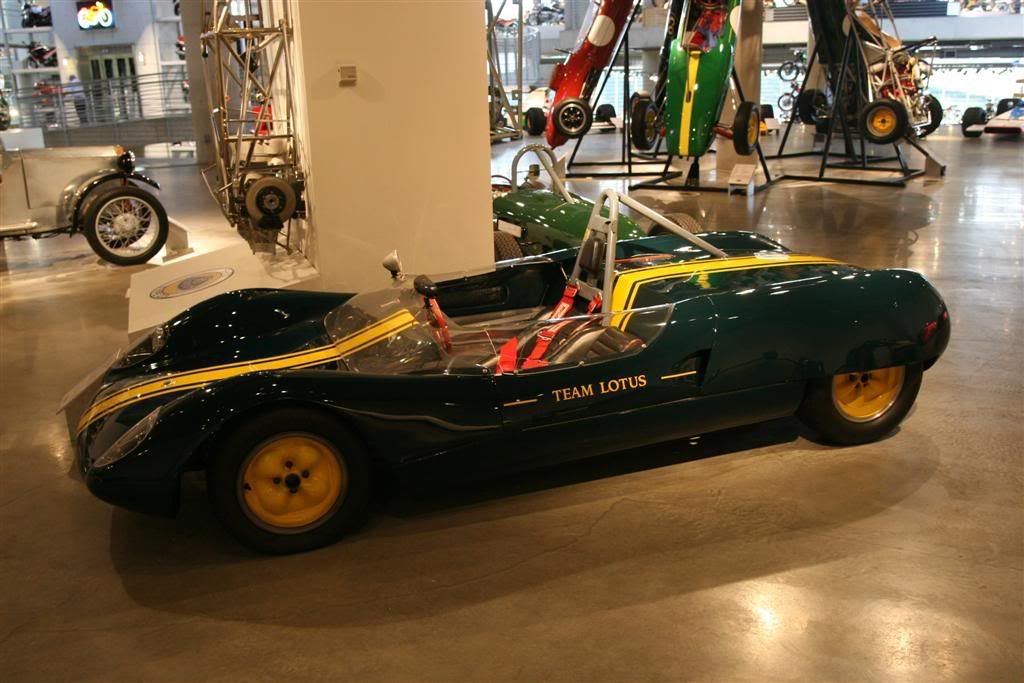
This place is split into five floors of awesome, with the oldest bikes on the second floor, and then successive generations getting newer as you go up. The lower floor contains race cars and their machine shops/workshops, and is closed to the public. But I can at least oogle from a distance.
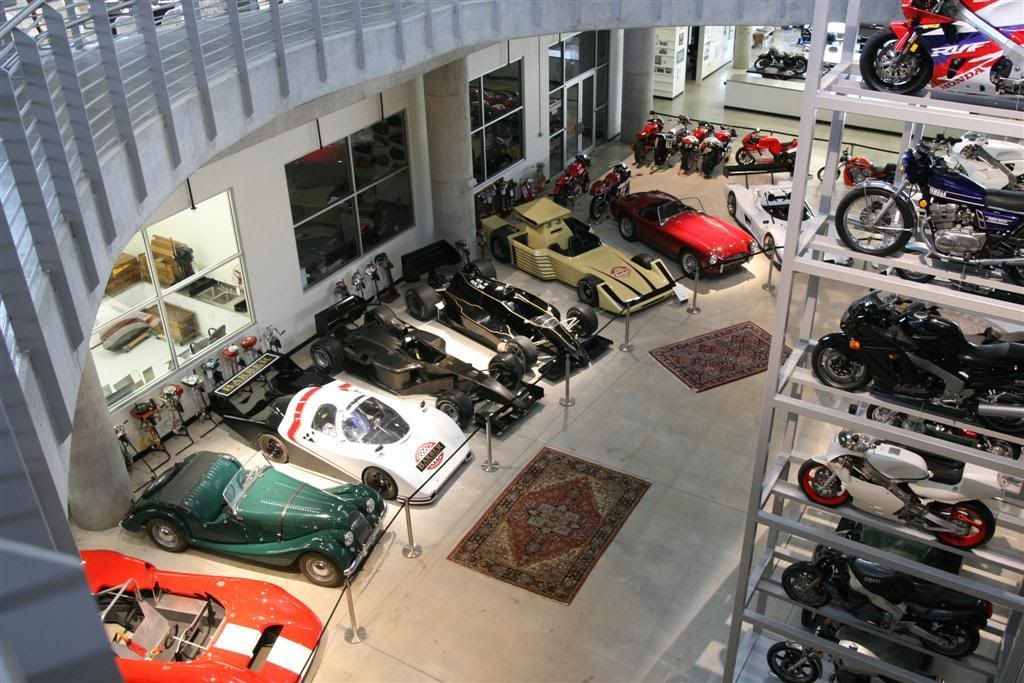
They had bikes going back to the dawn of civilization there (In my mind, before the invention of motorcycles there were nothing but dinosaurs, woolly mammoths, and I think dragons)

So let us continue on with many pictures of many weird bikes!
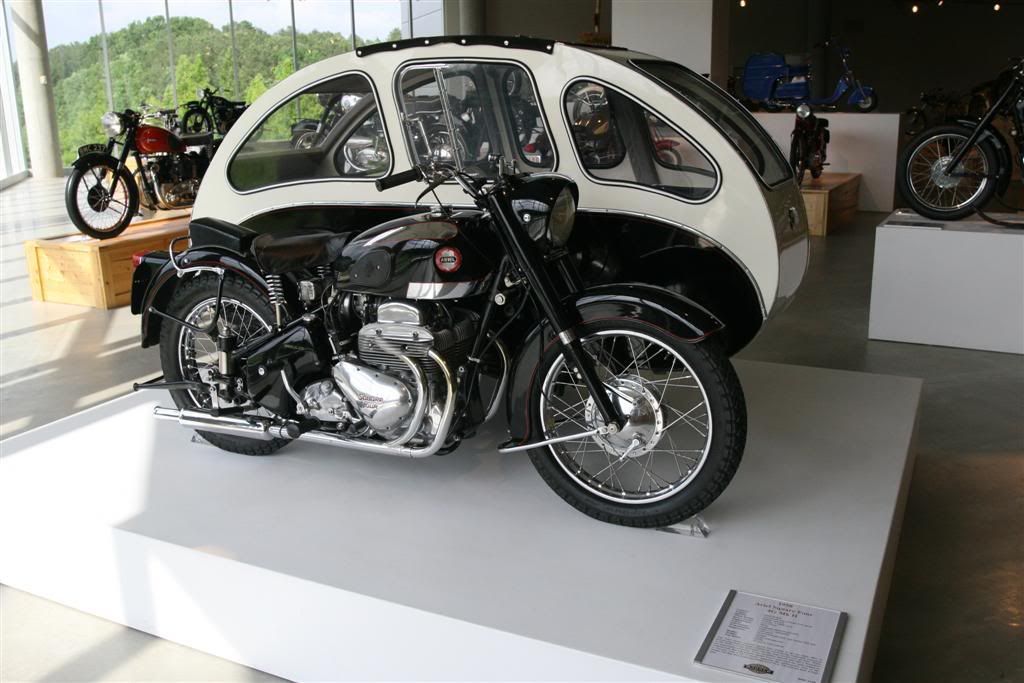
Sure the sidecar is strange, but take a careful look at that engine; A box four. Four cylinders, arranged in a square shape. Two crankshafts. It wasn't much of a hit; I wonder why.

Wait wait wait, Harley-Davidson made a dirt bike!? This is the first Harley I've ever seen that wasn't covered in expensive chrome farkles and weighed less then 600lbs!. The info tag on the bike said this was actually quite new, late '90s. Sometime around the turn of the millennium, the US Army decree that all it's vehicles must run on diesel, so now I think it's KTM that makes their bikes. Which annoyingly, they don't sell to the general public.
They actually have a massive collection of military bikes there, from all armies, from the 1910s to present.

More looks down at the first floor, and the immaculate machine shops. Oh, how I would love to have access to that equipment, in what looks like almost sterile conditions.
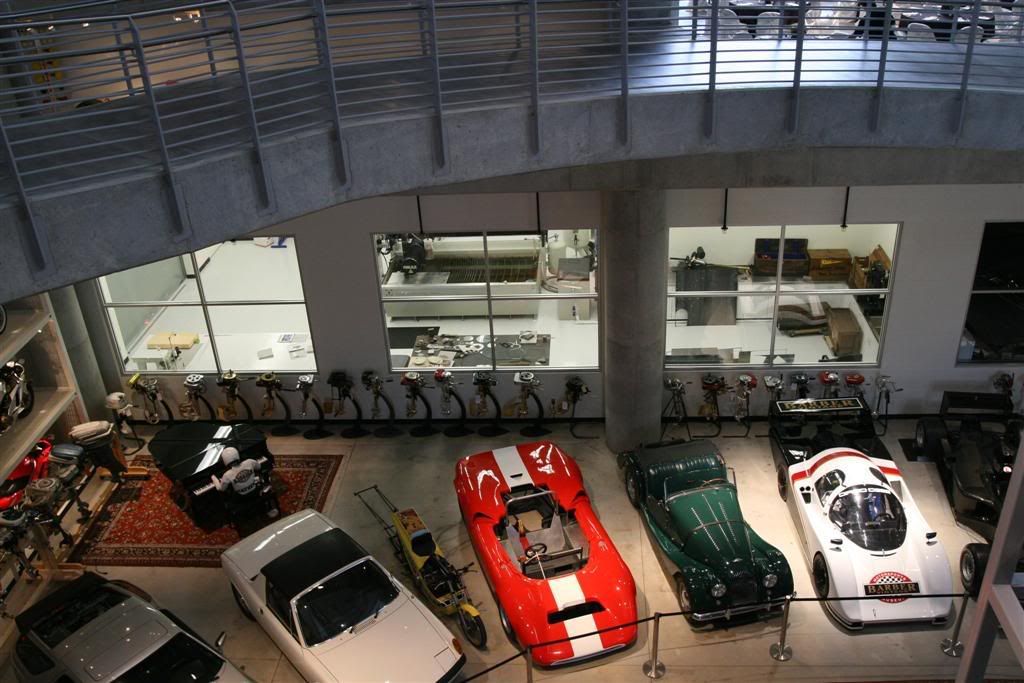
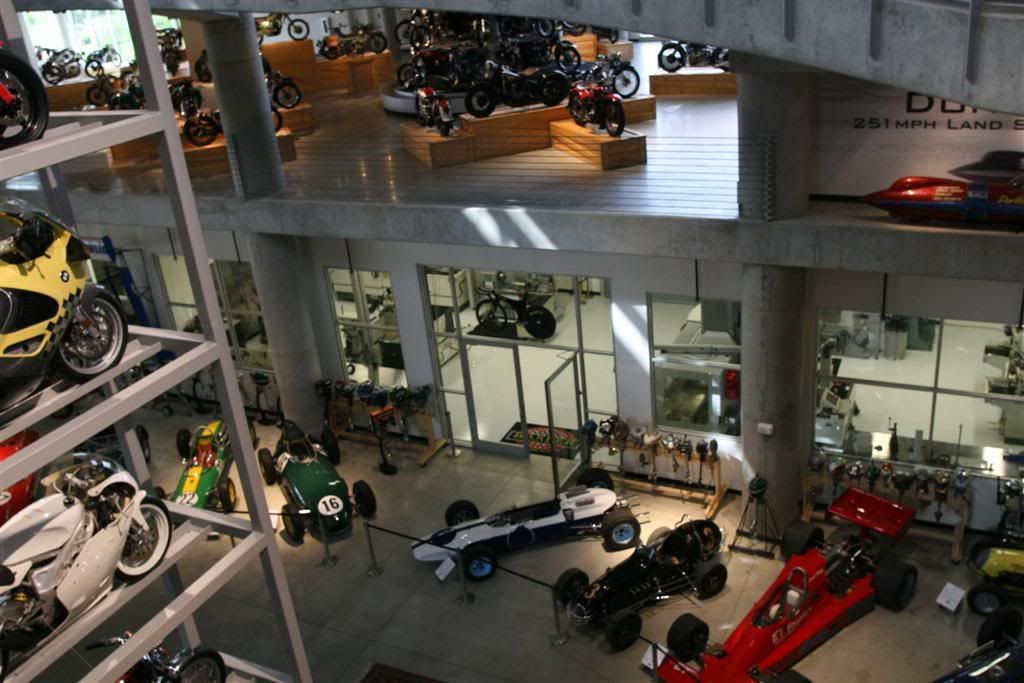
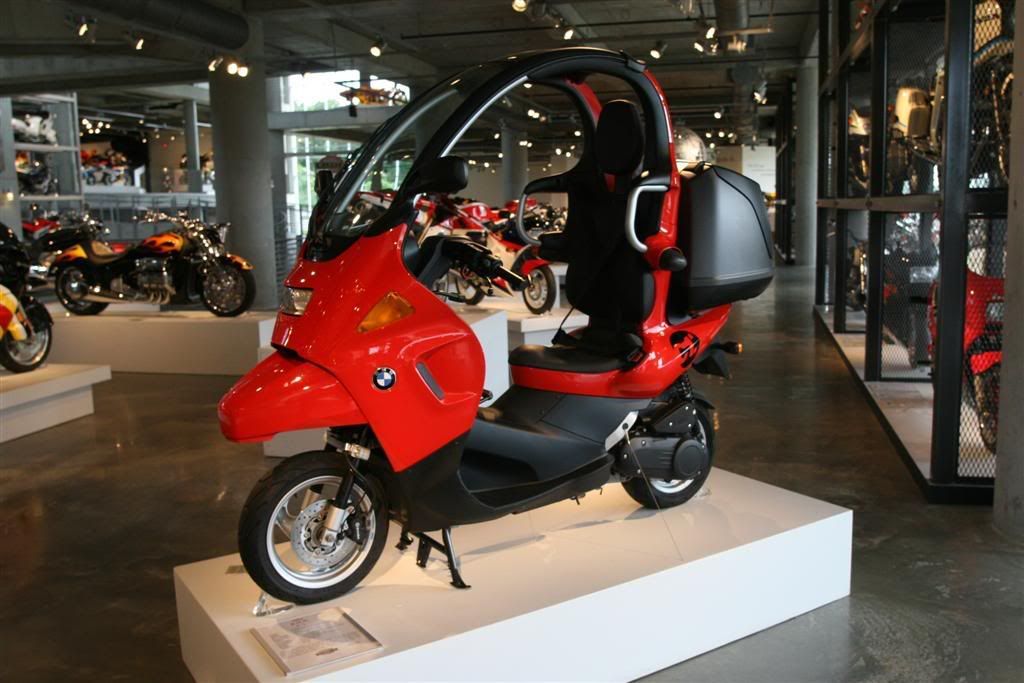
This never made it to the USA, but was sold in Europe for a short time. I guess what finally killed it was endless bureaucratic bickering about weather it was a motorcycle or a car, and if it was required to have seat belts.
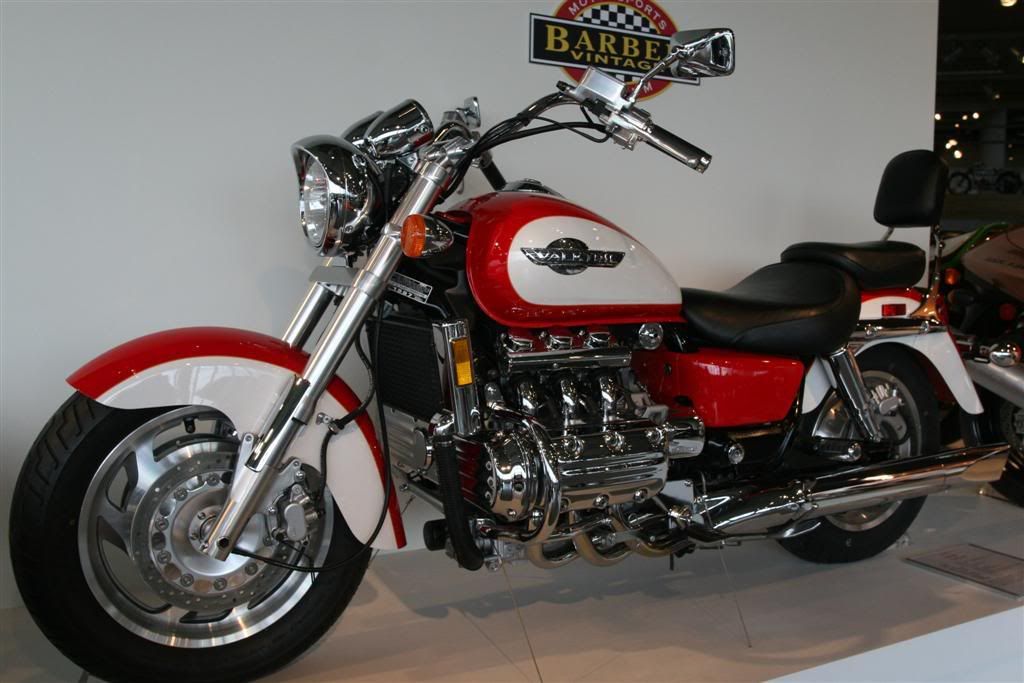
The Honda Valkerie is just a Goldwing, without all the huge fairings and bags. Taking off all the plastic really shows just how huge that flat six engine is. The whole front profile of the bike is almost dominated by the two-foot-wide timing chain cover.
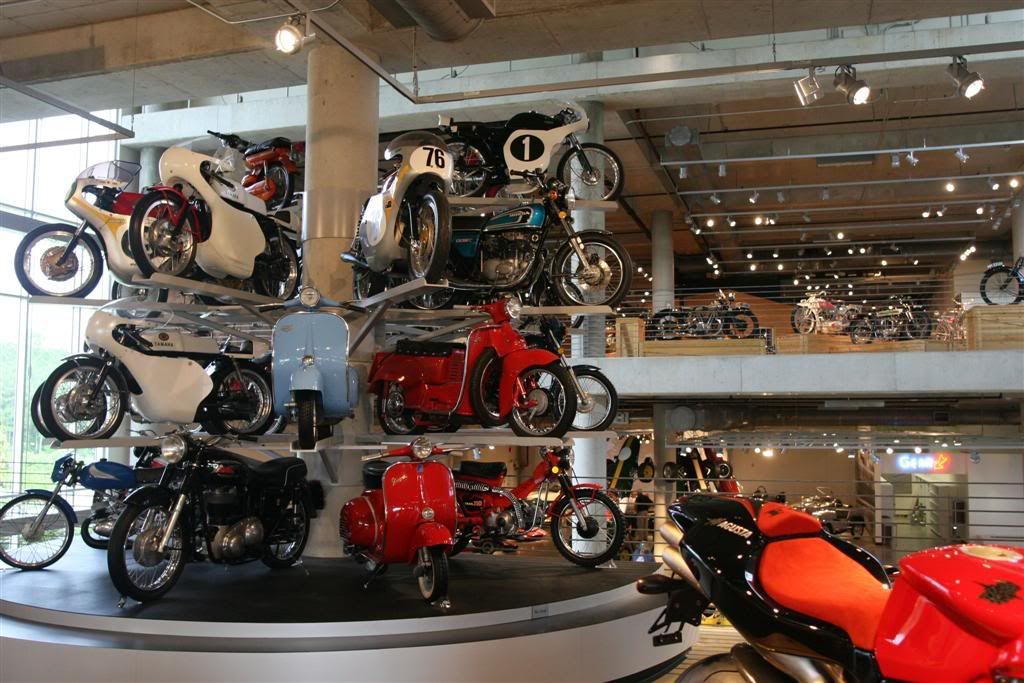
Everywhere you looked, there were more motorcycles, scooters, and anything with two wheels and an engine stacked to the ceiling.

The motorcycles used in the book "Investment Biker", about a rich guy and his girlfriend who spent a few years riding everywhere in the world you can possibly ride to.
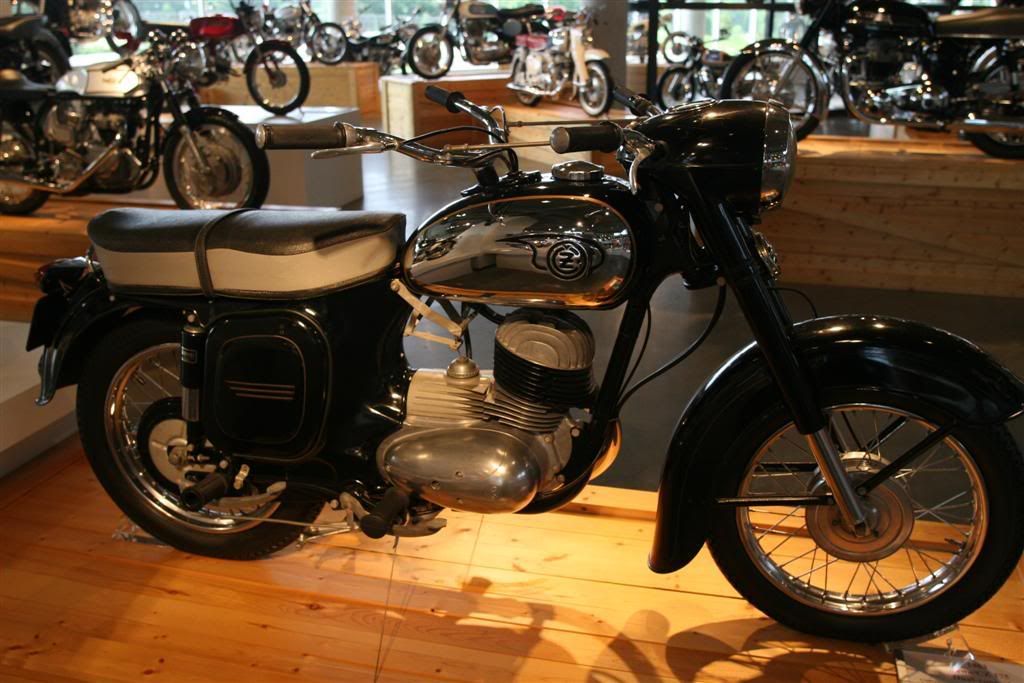
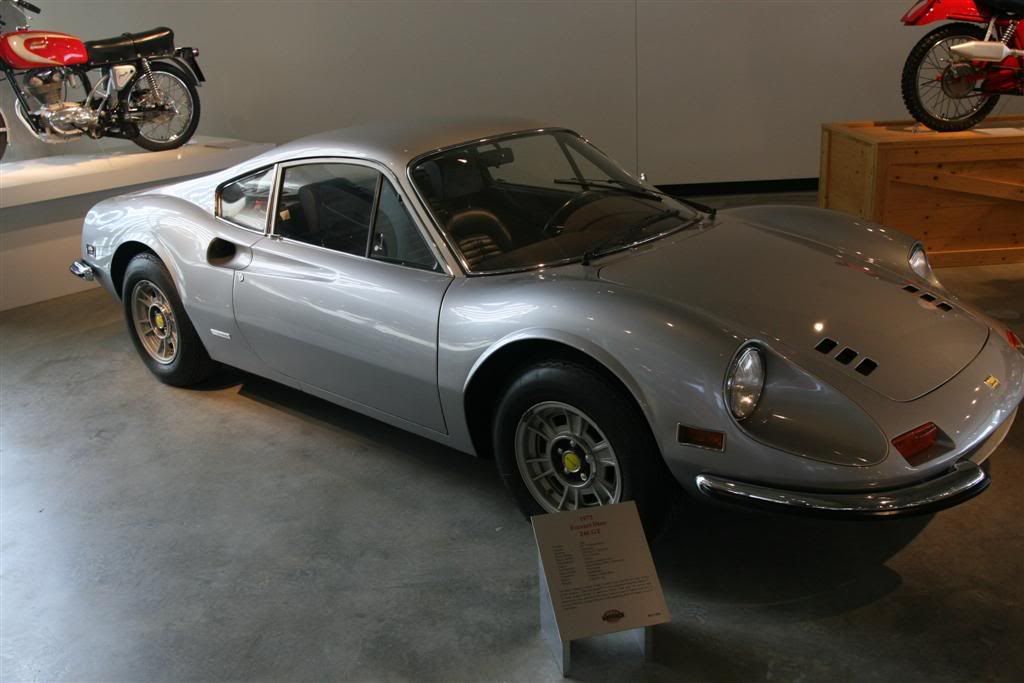
Pictures can't capture just how beautiful this car is, a Ferrari Dino. The lines were perfect and there wasn't a single angle from which it wasn't breathtaking. I was hoping this was one of those late-70s Ferraries that you can get for cheap (like $30k) so that I might have a chance to own one, but when I checked the internet . . . nope. $150k+. :(
Bikes back to the dawn of time.
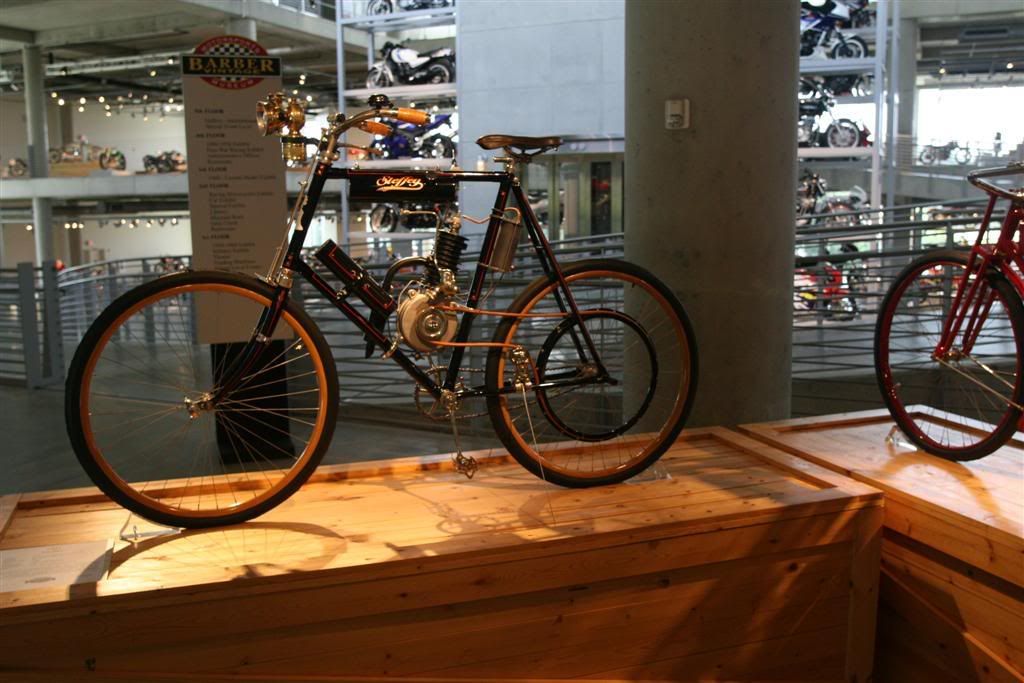

Sidecars are just cool, no matter what the bike.
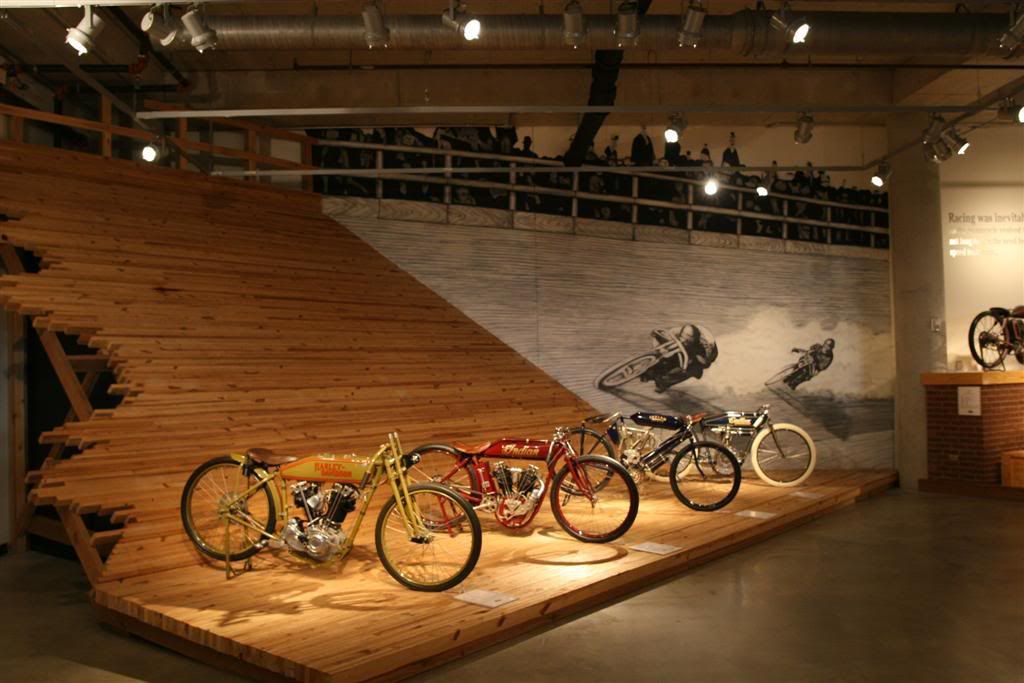
Board track racing is quite possibly one of the most dangerous motorsports ever conceived. Popular in the 1910s, the tracks started with moderate 25 degree banks, but as speeds increased, so did the need for steeper banking. Eventually, 60 degree banks such as this were not uncommon. The motorcycles were often direct driven and did not have a throttle control: The only speed was full power, and the bikes were towed up to starting speeds. The sport eventually fell out of popularity due to the obscene number of crashes and fatalities, both to the riders, and the audience who would watch from the top of the banks, where they were in prime location to be killed when riders crashed in corners and flew up (and over) the top of the track.

I think it's probably a good thing I wasn't alive back then, because I could picture myself at the edge of that railing, or even better, sitting on one of these things.
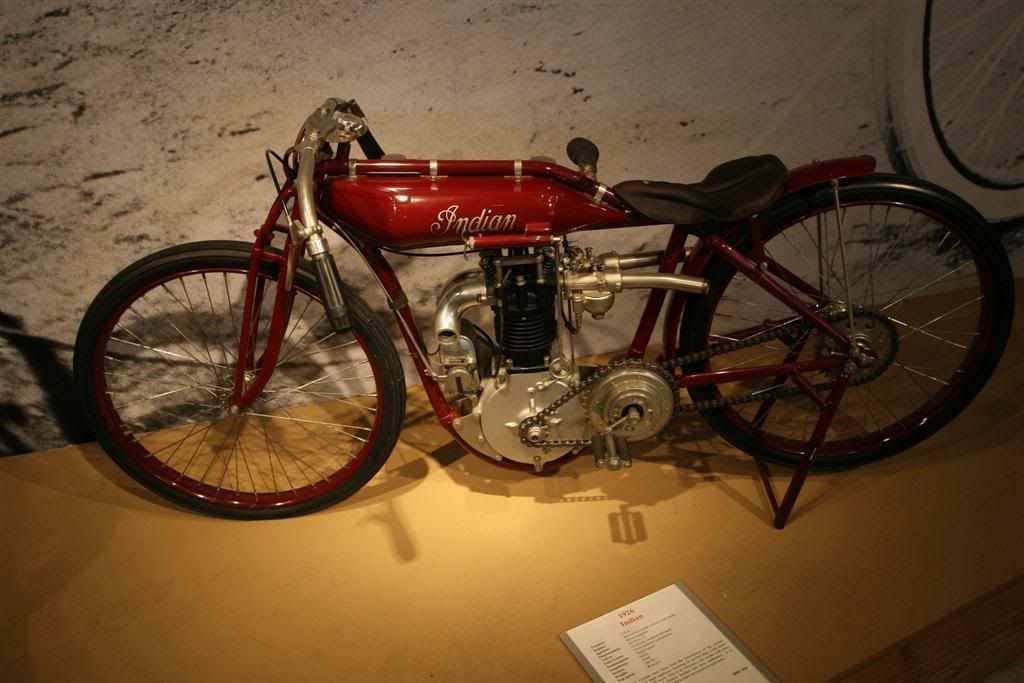
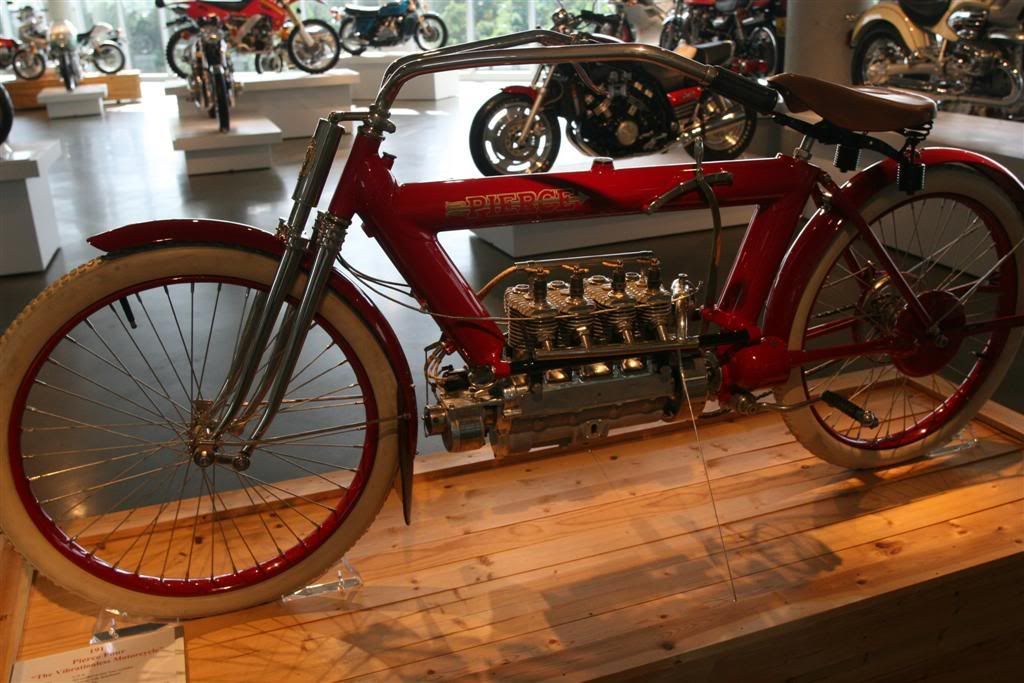
But on the third floor, I spied a bike that looked unlike anything else I'd ever seen. I stopped dead and just uttered "Wow . . . "
It was a Britten V-1000.
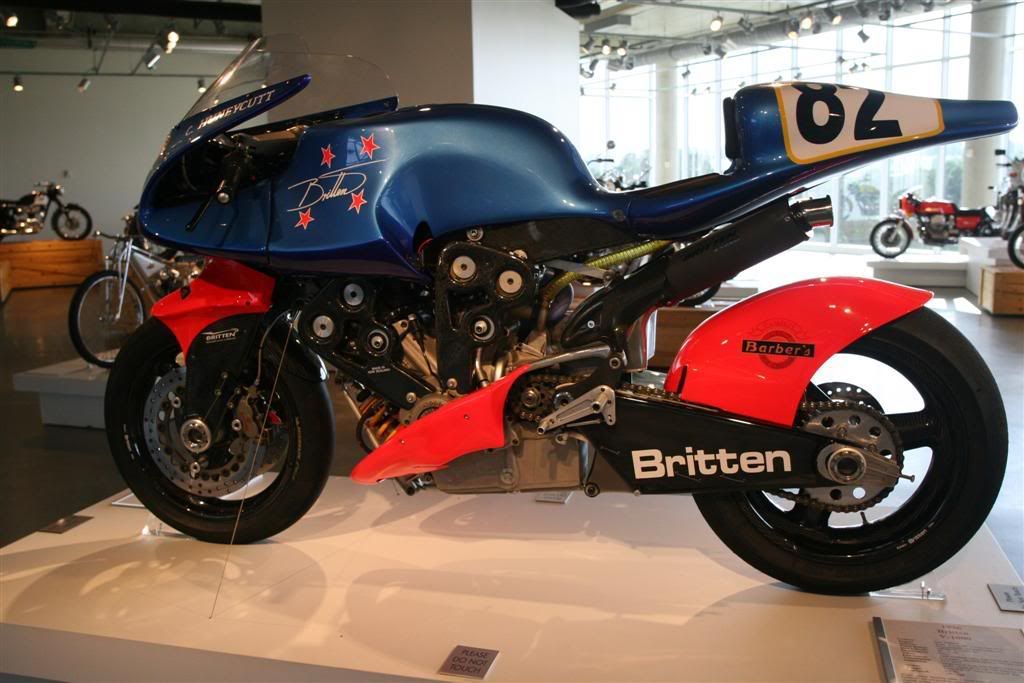
The story of the Britten motorcycle is a tale that any riding enthusiast simply LOVES to tell. Just ask any serious motorcyclist about the Britten, and prepare for a long run-on sentence about how one crazy guy in his garage took on the best racing teams in the world, and beat them. With a bike he built in his garage. It's quite possibly the best under-dog tale ever told, the kind of story that just makes you feel great about the world, and it's made even better for being true.
The story of the Britten motorcycle began in the early '90s, when long-time motorcycle and racing enthusiast John Britten of New Zealand decided to build his own superbike. Now a lot of people have done this before, and it's not the hardest thing in the world; you can get pre-made chassis, or get ambitions and weld up your own, buy crate engines from somewhere, buy the other parts, fit it all together and go.
This wasn't the approach that John Britten took. When it's said that he built his own motorcycle . . . he literally built almost every single aspect of it from scratch.

He designed the engine with pen and paper and a slide rule, manually carved the molds for it, hand-cast the block and casings, machined all the internal parts by hand, he BUILT the entire engine from SCRATCH. The bodywork and fairings started as giant blocks of foam and wire that he shaved down to the shape he wanted, then used to make molds and finally cast fiber-glass parts from. He used carbon fiber in ways that no one had even dreamed of; The wheels, suspension components, structural members, as much of the bike that could be was made from carbon fiber, which he shaped and brushed together by hand. There was no prototyping, then sending it out to some company and paying out the nose to have his prototypes made in carbon fiber; He did it all himself, with very basic hand tools, in his garage, with the help of some friends.
It was a kick in the face to everything conventional about motorcycle design at the time, and even today it looks like something from the future. Anything that the bike didn't need, it doesn't have . . . including a chassis. The bike has no frame; the suspension is bolted to the ends of the engine, with the fairing and seat sitting on top. There simply isn't a chassis. While the bike wasn't a whole lot more powerful then it's competitors, at ~165hp, it was FAR lighter, weighing barely over 300lbs. Even today, most motorcycles in this class are at least 400lbs, some even approaching 500lbs.
And the more you look at the bike, the more obvious that it becomes that this is a true one-off, custom machine built with only one single objective in mind; to go very, very fast.
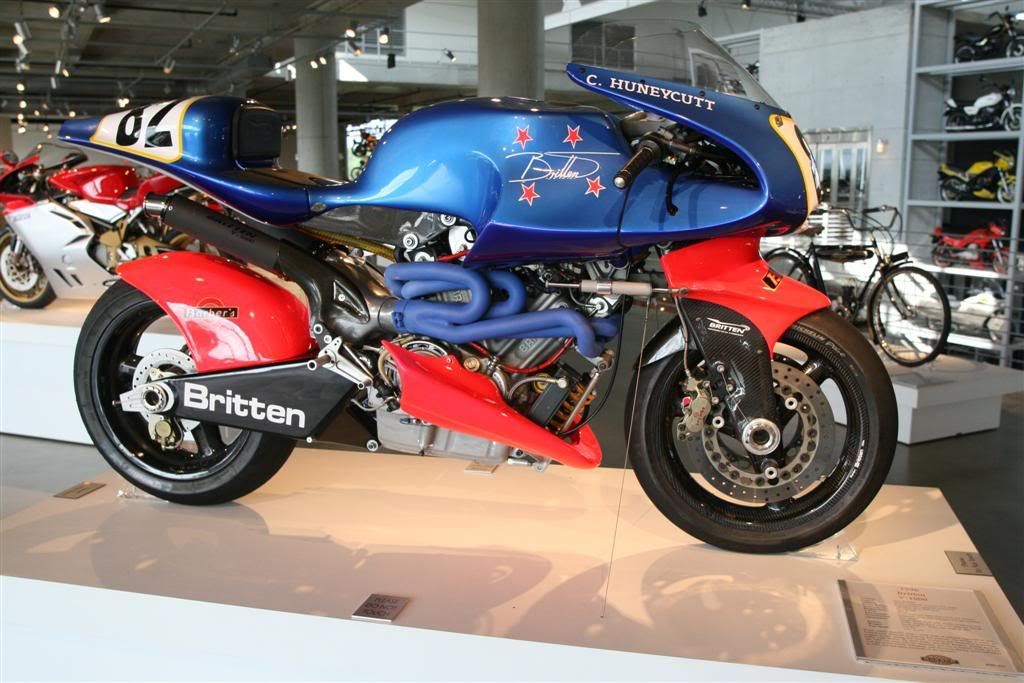
And go fast it did. This bike took on the best from Yamaha, Suzuki, Honda and Ducati, and blew them out of the water. These huge companies, with thousands of engineers, huge factories and effectively unlimited amounts of money, were beaten by a guy from the bottom of the world with a motorcycle that he'd built in his garage. Many people call it the greatest motorcycle ever made.
That's New Zealanders for you.
*composes self* Okay, moving on . . .

Another design that never caught on, probably for being so weirdly futuristic looking.
And then there was this thing, which has to be the flat-out weirdest bike I'd ever seen.
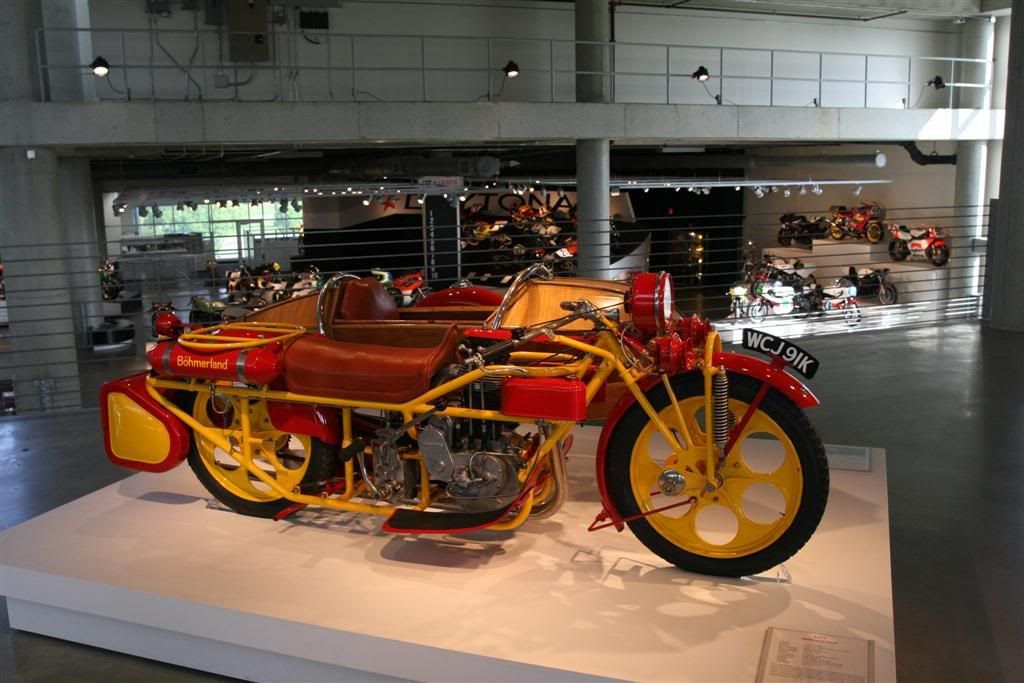
While the Britten was an exercise in engineering elegance, this thing is . . . something else.
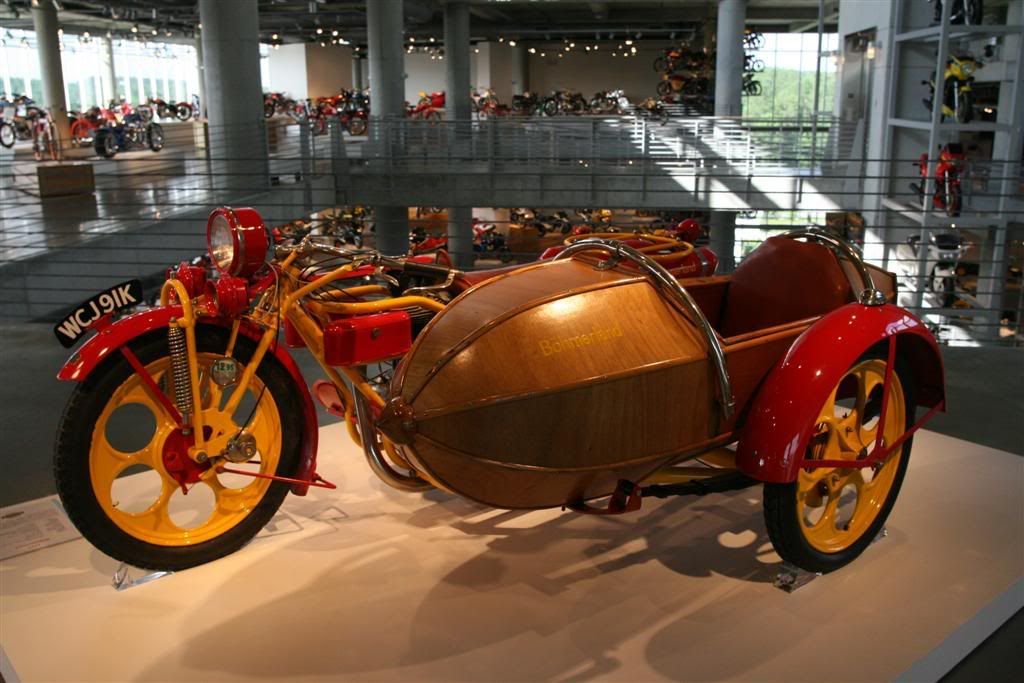
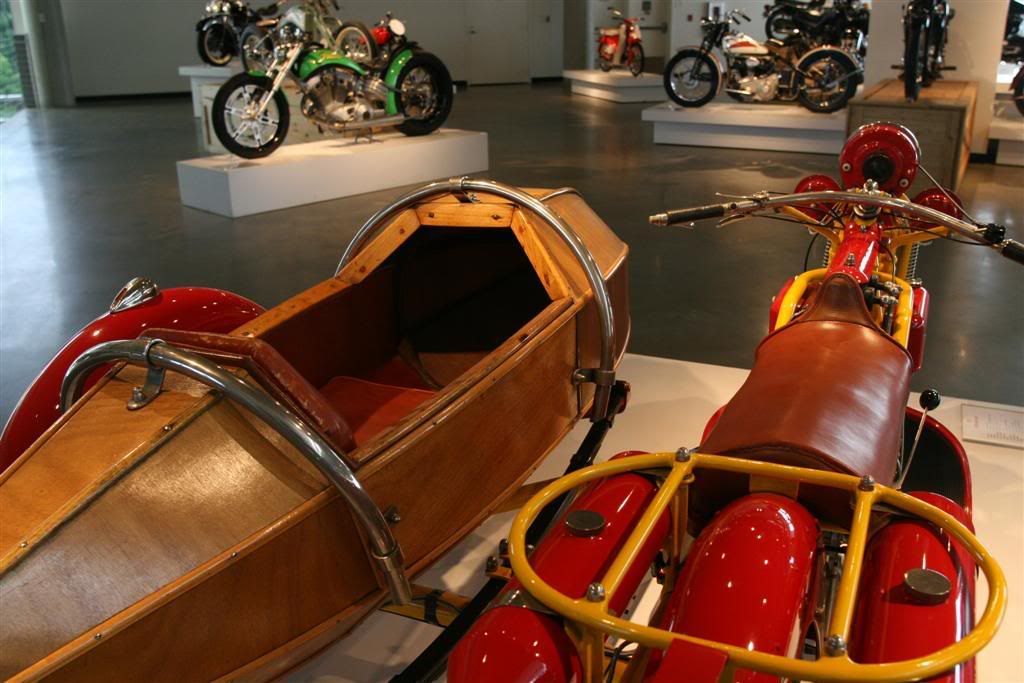
Continuing with our tour of oddities and bikes that simply shouldn't exist, there was this. Which doesn't look too weird, until you look closely at the engine.

Someone had managed to take two Kawasaki 800cc straight 4-cyl engines, and mated them together to form a 1600cc V-8. It almost looks factory.

I found this to be one of the most bad-ass looking motorcycles in the whole place. The info tag said it was built in extremely limited numbers for members of the German high command during World War 2. I love the murdered-out look, everything besides the engine and exhaust was either flat or glossy black. It was a sight to behold, one of the most intimidating machines I'd ever seen.
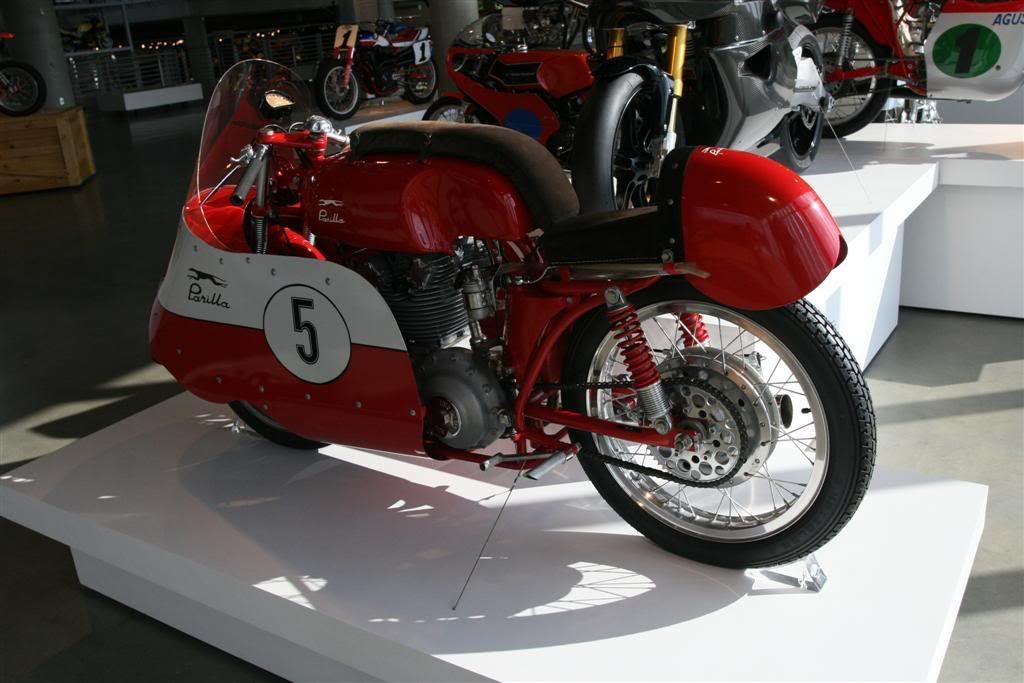
There was a time when fairings like this were popular in the world of racing, but they eventually fell out of favor because they made the bikes very unstable in crosswinds.

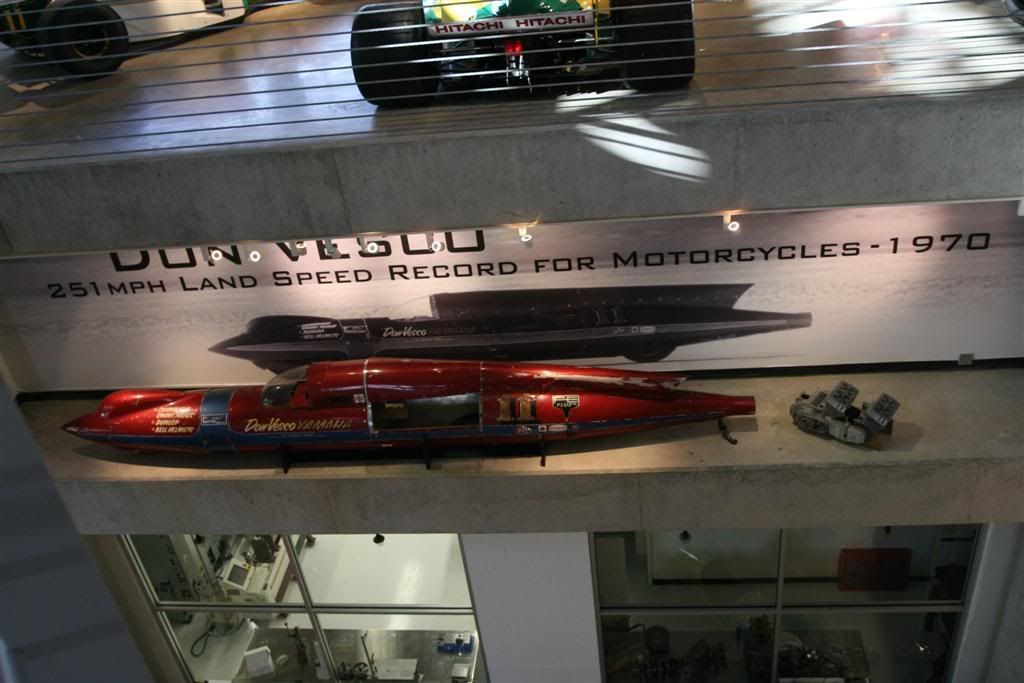
While it's sort of odd to think that what was a land speed record 40 years ago can now be accomplished by anyone with $20,000 to spend (Hyabusa + turbo kit), look at it this way. If the record speeds of 40 years ago can be achieved by a mildly modified street bike today, then it stands to reason that the street bikes of 40 years from now should be able to go as fast as the record-setting bikes of today! :D
Now, this next bike left me speechless for at least ten minutes when I first saw it.
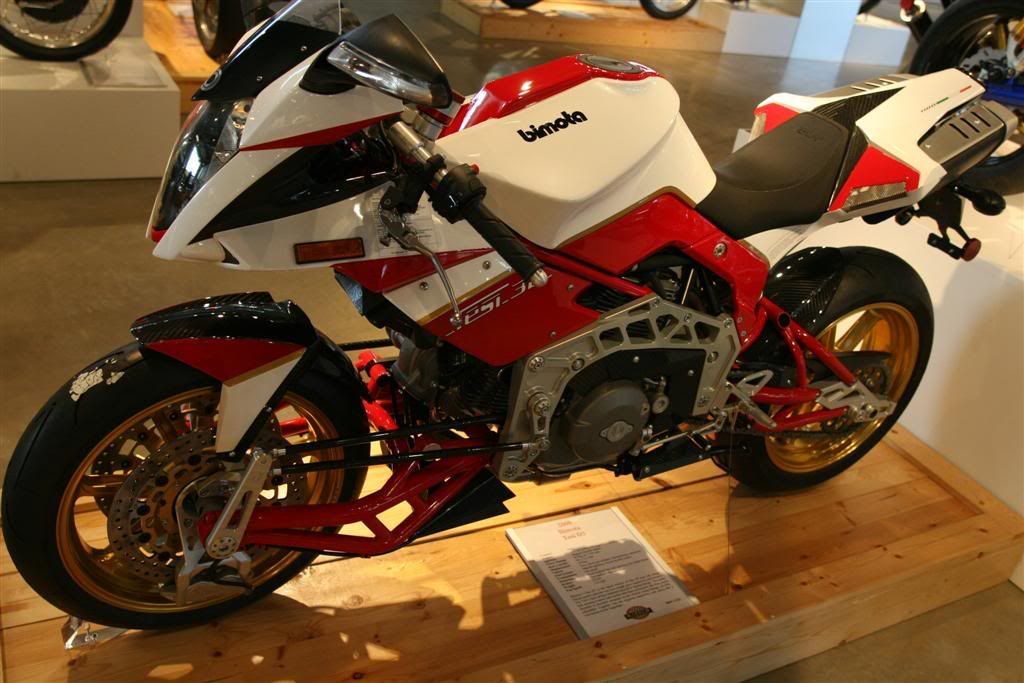
I'm not joking when I say it took me the better part of a quarter of an hour of staring at the thing just to figure out how the hell the front suspension worked. This is one of the most unique production bikes that I'd ever seen, so angular and sharp-edged, it looks like a cross between an F-117 Stealth Fighter and a superbike. I would LOVE to see this thing murdered out in black, I think it would give me very, very big problems in my pants.
And more pictures of some brand of cars that I've never heard of.
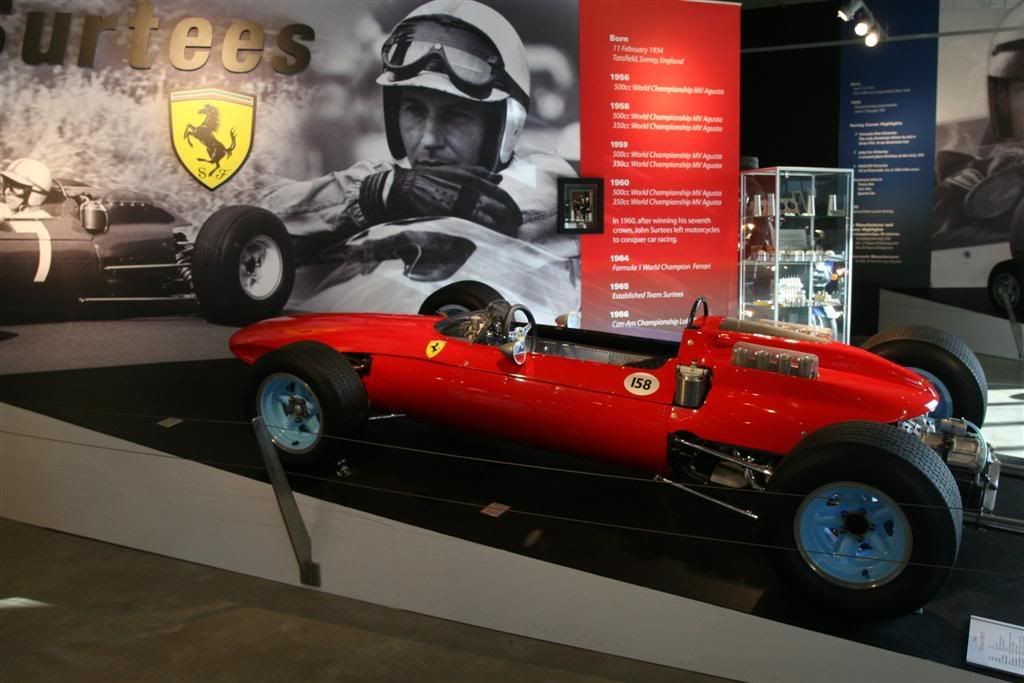
Some silly horse company, or something. It's probably not very fast.

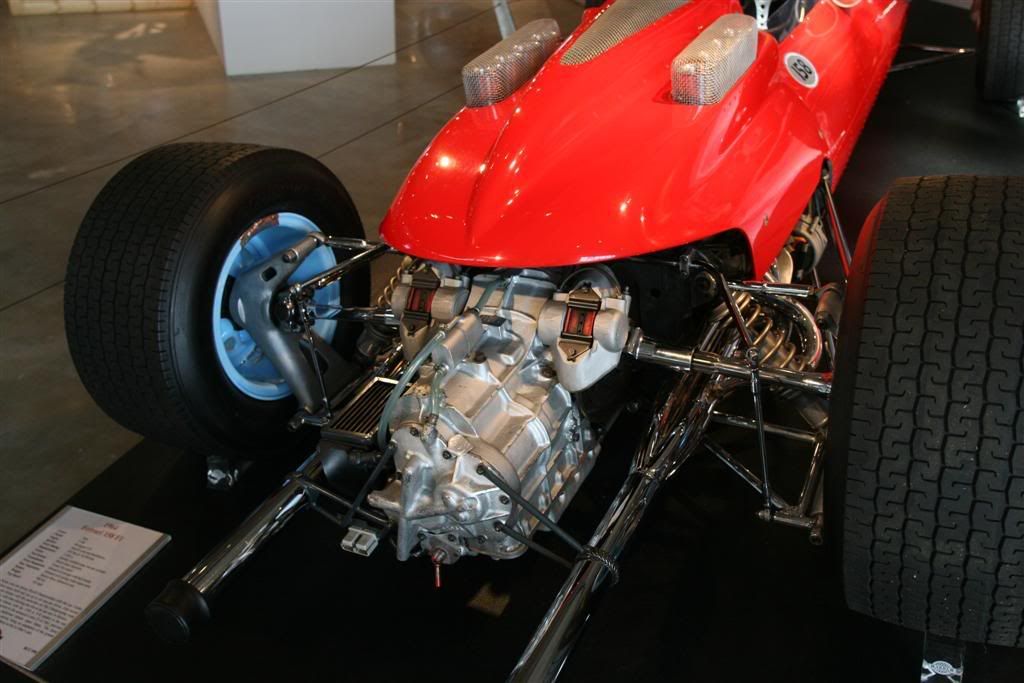
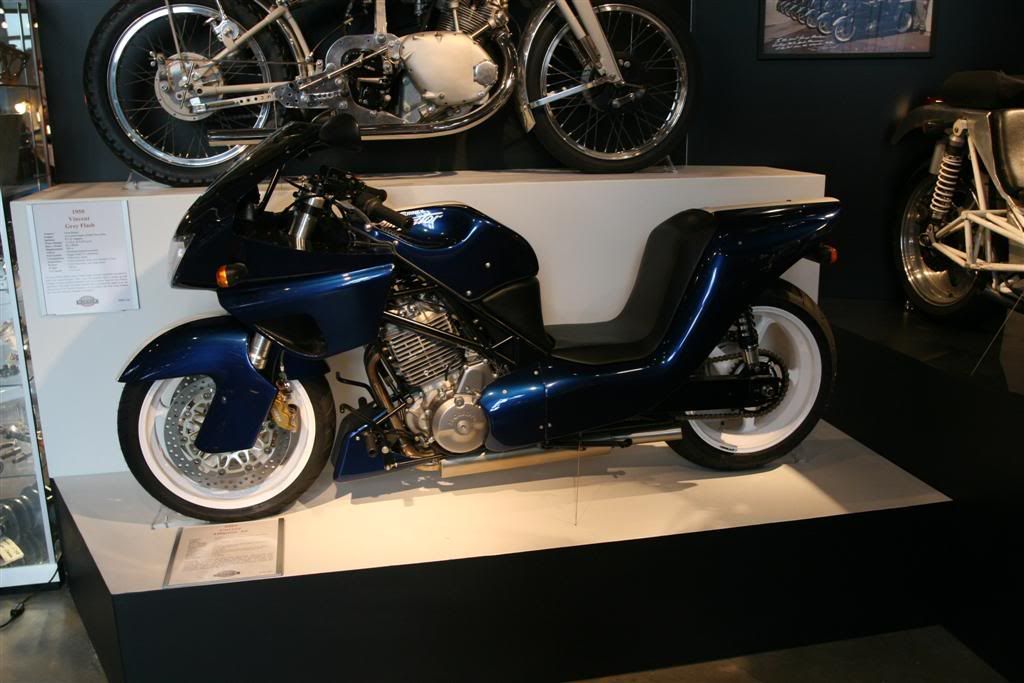
Good god, my spine hurts just looking at that thing.

Another experiment of cramming a V-8 into a motorcycle. Beautiful, if I must say.
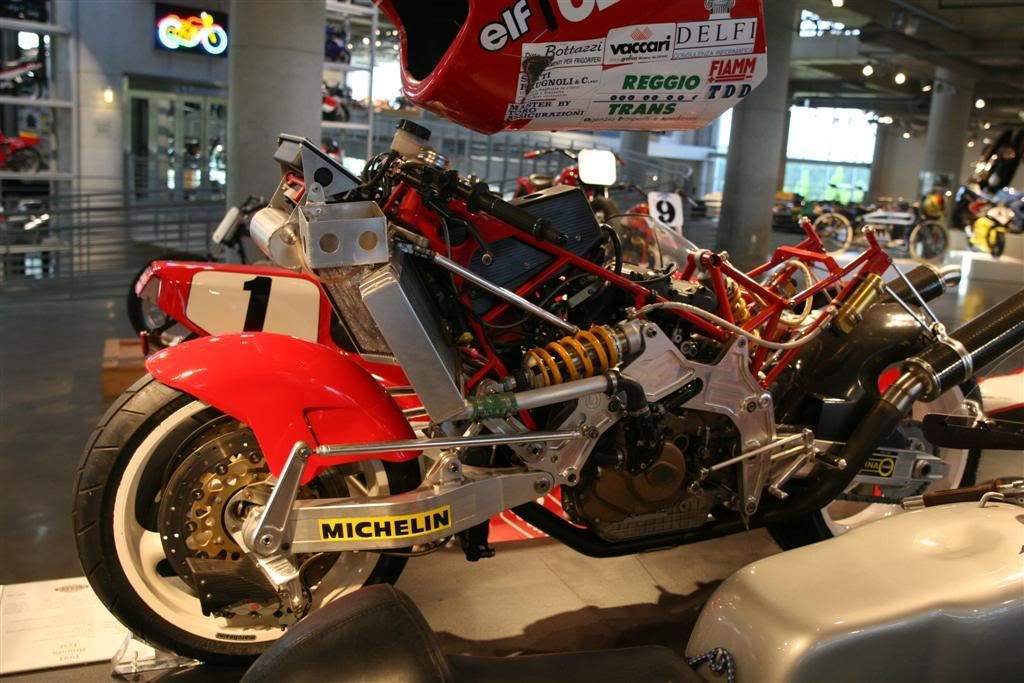
I can't remember what bike this was, but going by the front end, I'm guessing this is a Bimota. The bike's fairing is hanging above it. They are weird looking under all that fiberglass.
Goddamit, why didn't I take more pictures when I was there?! Anyway, that's all I have. The next time you're on a trip down to Deals Gap, you owe it to yourself to head another couple hours south and check this place out. It's worth it.
No comments:
Post a Comment